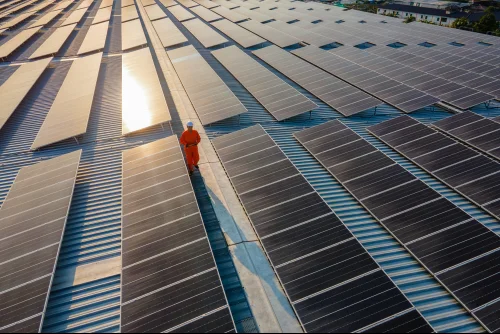5 Renewable Energy Sources To Look Out For in 2024 and Beyond

Let’s break down several key renewable energy resources and what investors can look forward to in the 2020s.
Key Takeaways
- After enduring setbacks during COVID, including supply chain woes and the halt of major developments, solar is bouncing back in a big way.
- There are key investment opportunities around the globe in renewable energy.
Renewable and clean energy technologies are already seeing historic levels of investment in the early 2020s, and there’s plenty of growth left to go and the last several years proved turbulent for the energy industry as a whole, including trials during COVID lockdowns. However, in 2023, a clearer course emerged for renewable energy in key markets around the globe.
The impetus for new clean energy includes new perspectives on energy independence following the war in Ukraine and related fuel limitations, as well as new investment in renewable infrastructure, growing concerns about climate change, and more. Let’s break down several key renewable energy resources and what investors can look forward to in the 2020s.
1. Solar
Estimates show that Solar PV capacity is expected to account for two-thirds of global renewable growth in 2023, with a promising decade ahead. After enduring setbacks during COVID, including supply chain woes and the halt of major developments, solar is bouncing back in a big way. It’s cheaper and more efficient than ever and can support growth both via individual consumer demand and major installations by businesses, farms and governments.
Key Opportunities: European solar installations offer key investment opportunities as Europe seeks greater energy independence following the war in Ukraine and related factors. Solar PV is on the rise in multiple countries throughout the continent, and it’s far from alone.
China, India and the United States also invest in solar through government funding and private growth. However, India is notably struggling with supply costs at this time. Capacity in all its forms will be big, especially for large-scale batteries. Look toward communities with low solar investment rates (particularly low-income areas with high ROI) and ideal climates for new opportunities. India, in particular, has broad potential for growth as it moves away from high reliance on coal.
Related: Top Solar Energy Trends To Look Out For in 2023 and Beyond
2. Offshore wind
Offshore wind investment is already having a great decade, and its growth is expected to continue. The United States alone has almost 100% of its current offshore wind capacity in the permitting phase, so capacity can easily be expected to double in the 2020s (with even more projects in the planning stages). While projects were also hit hard by supply chain issues, they’ve been quick to recover in many regions.
Key Opportunities: 2022 showed the second-highest growth in offshore wind history, and it’s just beginning. Big projects off the coasts of both the United States and Europe are attracting plenty of attention but have limited opportunities for current investment. Investors should look ahead to the estimated 447GW of offshore wind energy coming online in the next decade, with opportunities in Australia, Japan, Central and South America and more.
Related: High Gas Prices Aren’t Going Away — Here’s a Look at the Latest Trends in the Global Energy Industry
3. Onshore wind
For the past few years, onshore wind has been eclipsed by the growth of offshore farms, which have taken primary focus. That’s quickly starting to change as onshore projects stalled during COVID-19 are resuming, and more projects enter development. In 2023 alone, onshore wind projects are expected to see a 70% rebound.
Key Opportunities: China, China, China. The country’s push toward onshore wind takes the lion’s share of investment. However, recent economic issues add greater uncertainty to Chinese investment, requiring particular care over the next several years. Europe and the United States are also seeing growth, but there’s not quite as much new opportunity in these areas, which are currently focused on more offshore projects. Permit delays can also be a problem for onshore projects in areas like Europe, which may delay projects considerably in the coming decade.
Related: The Shipping Industry Has an Emissions Problem. This Is One Green Solution.
4. Green hydrogen
Green or clean hydrogen is derived from renewable sources like water and other low-carbon methods, as opposed to hydrogen derived from natural gas. While it’s seen less wide-scale investment than sectors like solar and wind, there’s a lot of potential here. Green hydrogen is typically more cost-effective to transport and doesn’t have the same infrastructure woes that some renewable energy can face.
Key Opportunities: Investment opportunities are widespread but highly dependent on local interest and funding. Watch the United States as the Inflation Reduction Act provides plenty of incentives for more green hydrogen. Other countries like Australia, Japan, and China are following similar blueprints. Don’t let this unsung renewable hero escape notice.
Related: Green Hydrogen: What Is It and Why It Matters
5. Hydro
Globally, hydropower has seen capacity growth of 34GW in the past year, a healthy amount but somewhat limited compared to other renewables. However, the future includes up to 590 GW of hydropower development worldwide, making hydro a key player in meeting clean energy goals for many nations.
Key Opportunities: India is currently seeing high growth in hydro (as is Pakistan), but don’t discount the United States, either: California and Southwest states are also high-growth areas at this time. China remains one of the top players, but Europe’s investments are also on the rise in the past year.